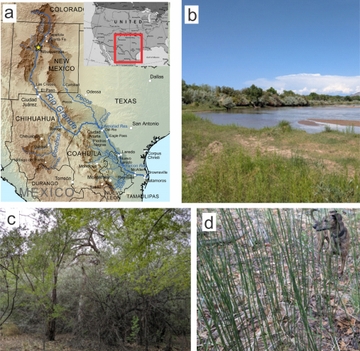A team of researchers at The University of New Mexico has uncovered how a peculiar, prehistoric plant might unlock new ways to reconstruct Earth's ancient climate.
Led by UNM Earth and Planetary Sciences Professor Zachary Sharp, the study published in the Proceedings of the National Academy of Sciences (PNAS) titled, "Extreme triple oxygen isotope fractionation in Equisetum" focuses on horsetails — hollow-stemmed plants that have thrived on Earth for more than 400 million years. The team's findings reveal that water traveling through these plants undergoes such intense natural distillation that its oxygen isotope ratios resemble those found in meteorites or in extraterrestrial materials.
"It's a meter-high cylinder with a million holes in it, equally spaced. It's an engineering marvel," Sharp said. "You couldn't create anything like this in a laboratory."

The discovery helps resolve long-standing mysteries around oxygen isotope data in desert plants and offers a valuable tool for climate reconstruction — particularly in arid environments.
Oxygen isotopes in water act like tracers for scientists, offering clues about water sources, plant transpiration rates, and even atmospheric humidity. But heavier isotopes occur in very small amounts, making it difficult to model how their ratios change under natural conditions.
Sharp's team collected samples from smooth horsetails (Equisetum laevigatum) along the Rio Grande in New Mexico, measuring how the isotope ratios evolved from the plant's base to its tip. The uppermost water samples showed unprecedented readings, values that previously seemed to fall far outside of the range of anything on Earth.
This past July, Sharp had the opportunity to present this research at the Goldschmidt Geochemistry Conference in Prague.
"If I found this sample, I would say this is from a meteorite," Sharp said during the conference. "But in fact, these values do go down to these crazy low levels."
The new data allowed the researchers to refine their models, offering fresh insights into previously unexplainable results from other desert plants. Sharp believes these improved models could be used to understand ancient climate systems as well.
Fossilized horsetails, which once grew up to 30 meters tall, contain tiny silica structures called phytoliths that may preserve isotope ratios for millions of years. These phytoliths act as a "paleo-hygrometer," or an ancient humidity gauge, according to Sharp.
"We can now begin to reconstruct the humidity and climate conditions of environments going back to when dinosaurs roamed the Earth," he said.
This research adds to UNM's growing contributions to geosciences and positions horsetails — some of nature's oldest survivors — an unlikely but powerful climate storytellers.






